Best AR-15 Handguard Choices: Guarding Your Hand
Tinker, tinker, tinker, if you own an AR, you’ve had to have had the urge to tinker with it. Why wouldn’t you? They are the most customizable platforms on the planet. You can swap nearly everything. Triggers, stocks, grips, and of course, handguards. Handguards come in numerous designs, lengths, configurations, and more. In this article, we’ll go over what we believe are the best AR-15 handguard options available (and why we think so).
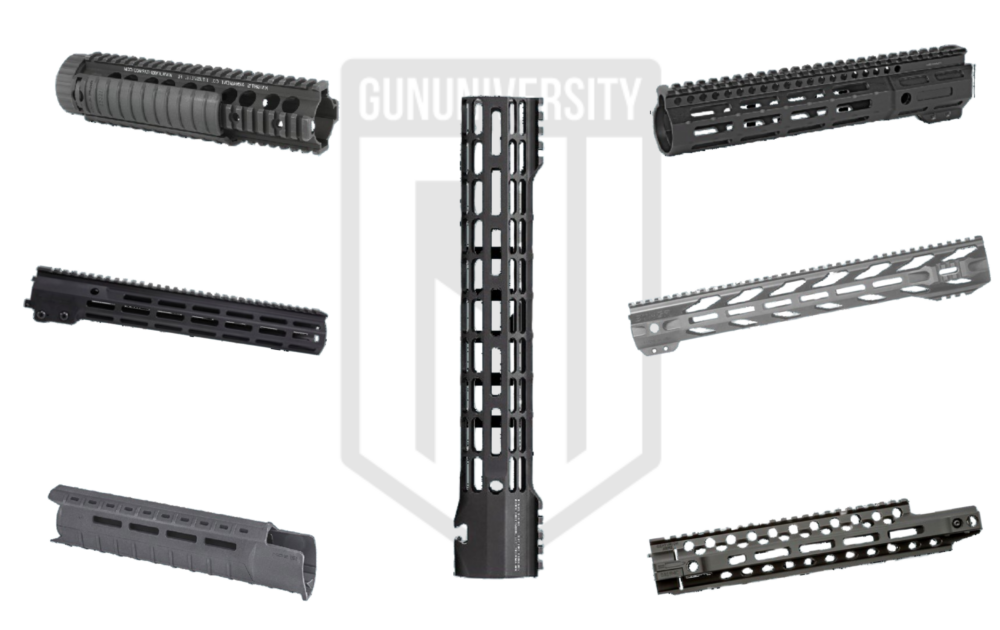
Purpose of a Handguard
It’s to guard the hand, duh. Barrels get hot, and your hand will get toasty without a handguard. The earliest AR-15 and M16 rifles used simple polymer handguards. The use of polymer in the weapon’s furniture was quite revolutionary back in the day and provided a lightweight alternative to wood.
That’s all fine and dandy, and while some budget rifles come with simple handguards, that’s hardly the only purpose of these things. Modern handguards are utilized to mount accessories. These accessories include lights, lasers, bipods, sling mounts, and much more. As the technology evolved, these handguards became more important, and modularity became key to utilizing the top tech.
At the same time, these handguards still have to be handguards. They need to provide you with adequate and ergonomic space to grip the gun and easily use it. You’ll also need to consider various factors, including barrel length, attachment method, sight and gas block setup, and more. Luckily, you’ve clicked the right link, and we’ll take you through the best AR 15 handguards on the market and explain the different factors involved in choosing a proper handguard.
How I Chose the Best AR-15 Handguard
As a former Marine and lifelong shooter, I’ve spent years handling various AR-15 handguards, giving me insight into what makes a great one. In compiling this article, I drew on my personal experiences and consulted with expert shooters familiar with AR-15 handguards. Their input has shaped this list of top-rated AR-15 handguards.
Now, I know that choosing an AR-15 handguard is a personal decision, and what suits me might not be perfect for you. Everyone has their preferences, which is why I’ve ranked these handguards from 1 to 7 while ensuring each selection caters to different needs. Additionally, I’ve included a buyer’s guide to help you understand what to consider when selecting an AR-15 handguard.
Best AR-15 Handguards
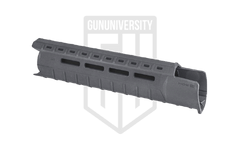 |
| Check Price | |
 |
| Check Price | |
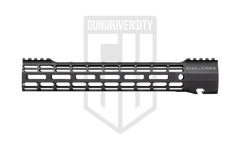 |
| Check Price | |
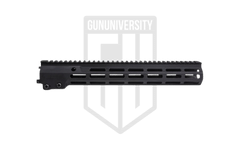 |
| Check Price | |
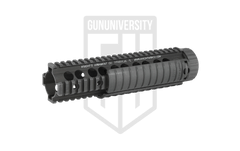 |
| Check Price | |
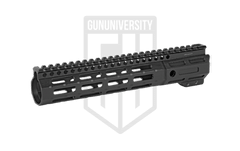 |
| Check Price | |
 |
| Check Price |
Best AR-15 Handguards
- Magpul MOE SL
- STNGR RPTR
- Aero Precision Atlas
- Geissele Super Duty Mk16
- Knight’s Armament RAS
- Midwest Night Fighter
- Centurion C4
Best AR-15 Handguards Specifications
Below is a list of our Best AR-15 Handguards. Here we can compare and line up the specs from each of the products and help you make the best decision possible.
| Handguard | Length | Weight | Attachment Type |
|---|---|---|---|
| Magpul MOE SL | 8.4 to 10.9 inches | 8.3 ounces | M-LOK |
| STNGR RPTR | 8.25 to 15 inches | 8.11 to 11.64 ounces | Hybrid |
| Aero Precision Atlas S-One | 7.3 to 14.94 | 4.86 to 7.95 ounces | M-LOK |
| Geissele Mk16 | 9.3 to 15 inches | 10.1 to 14.2 ounces | M-LOK |
| Knight's Armament RAS | 6.25 to 12 inches | 8.9 to 22.4 ounces | Picatinny rails |
| Midwest Night Fighter | 9.25 to 13.5 inches | 11.4 to 14.1 ounces | M-LOK |
| Centurion C4 | 7 to 12 inches | 8.7 to 14.2 ounces | Various |
Best AR-15 Handguards Reviews
Now that we’ve had an overview look at our list, we’ll individually review each item. In this section we’ll be revisiting our specs, speaking about the product, and looking at the pros and cons.
Magpul MOE SL Specs
- Length 8.4 to 10.9 inches
- Weight 8.3 ounces
- Attachment Type M-LOK
Magpul MOE SL Review
I’ve found the Magpul MOE SL handguard to be a real gem. It’s perfect if you’re looking to upgrade without spending a fortune. For less than 50 bucks, you can swap out your basic handguard for this sleek M-LOK-compatible model. Installing it was a breeze, especially since my rifle already had the necessary FSB setup.
What really impressed me was its ergonomic design and lightweight feel. The slim profile not only looks great but also improves handling and comfort while shooting. I especially liked how the forward edge wraps around the FSB, allowing for a more extended reach without feeling restricted.
The M-LOK system on the sides and bottom is great for attaching accessories like lights and grips, though I did miss having options for top-mounted devices. Heat management was surprisingly effective thanks to the aluminum insert inside, which kept things cool even during longer shooting sessions.
Overall, if you’re on a budget and want something reliable and practical, the Magpul MOE SL is a solid choice. It’s sturdy, easy to customize, and backed by Magpul’s reputation for durability.
Magpul MOE SL Pros and Cons
- Easy to Install
- Budget-Friendly
- Works With FSB Rifles
- Limited M-LOK slots
Magpul MOE SL Deals
STNGR RPTR Specs
- Length 8.25 to 15 inches
- Weight 8.11 to 11.64 ounces
- Attachment Type Hybrid
STNGR RPTR Review
I recently picked up the STNGR RPTR (I call it the Raptor), and I’ve been really impressed with it for my AR-15 setup. What caught my eye is how it combines M-LOK slots with integrated Picatinny rails. STNGR sells them directly, so you get a reasonable price without any middleman markup.
Installing the RPTR was surprisingly easy, thanks to the straightforward barrel nut that doesn’t need timing. For someone like me who dislikes fussing with barrel nuts, this was a huge plus. The handguard features a full-length Picatinny rail on top, perfect for mounting all kinds of accessories, plus shorter Picatinny sections strategically placed around the handguard.
Available in lengths from 8.25 inches to 15 inches, the RPTR is lightweight yet strong, with weights ranging from 8.11 ounces to 11.64 ounces. It has two QD sling attachment points at the rear, although it would’ve been nice to see options at the front too.
Made from aluminum with a type 3 hard coat anodizing, the RPTR not only looks sharp but also performs great across different AR builds. Whether you’re new to building or a seasoned pro, this hybrid design offers fantastic versatility and a sleek look for your rifle.
STNGR RPTR Pros and Cons
- Easy to Install
- Mixes M-LOK with Pic Rails
- Various Lengths
- A Little Front Heavy
STNGR RPTR Deals
Aero Precision Atlas S-One Specs
- Length 7.3 to 14.94
- Weight 4.86 to 7.95 ounces
- Attachment Type M-LOK
Aero Precision Atlas S-One Review
I went with the Aero Precision Atlas S-One because it’s perfect for my lightweight rifle build. The Aero Taper Lock Attachment System isn’t just a fancy name—it’s practical and easy to install without any headaches. What’s impressive is how light it is, even in the longest size, weighing just 7.95 ounces. That’s significantly lighter than most others in its class.
What really sold me is its smart design: Aero Precision skipped the full-length top rail, opting for just enough space for essentials like a front sight. This not only cuts weight but keeps the profile sleek. There are plenty of M-LOK slots for accessories, and the integrated QD sling sockets are in just the right spots for easy sling attachments.
On my Aero EPC, the Atlas S-One has made a noticeable difference in handling. It feels more balanced and easier to maneuver. If you’re looking to lighten your setup without sacrificing functionality, this handguard is a solid choice.
Aero Precision Atlas S-One Pros and Cons
- Super Lightweight
- Easy to Install
- Balanced
- Minimalist Design Won’t Appeal to Everyone
Aero Precision Atlas S-One Deals
Geissele Super Duty Mk16 Specs
- Length 9.3 to 15 inches
- Weight 10.1 to 14.2 ounces
- Attachment Type M-LOK
Geissele Super Duty Mk16 Review
The Geissele Super Duty Mk16 is my top pick for a tough, reliable handguard that really stands up to the test. Its pedigree in special operations circles, especially with units like SOCOM’s URGI, speaks volumes about its performance under pressure.
Crafted from 7000 series aluminum, the Mk16 is built to last. The anti-rotation tabs and set screws ensure it stays rock-solid, which is crucial for maintaining accuracy and reliability in intense situations.
What I really love about it are the plenty of M-LOK slots. You’ve got them at 3, 6, 9 o’clock, plus extras at 1, 5, 7, and 11 o’clock, allowing you to mount accessories like lights and lasers exactly where you want them.
It comes in various lengths from 9.3 to 15 inches, so you can choose what suits your setup best. While it’s not the lightest option out there, weighing between 10.1 and 14.2 ounces, its durability more than makes up for it.
Overall, the Geissele Super Duty Mk16 isn’t just any handguard—it’s a testament to toughness and innovation, setting the bar high for modern duty rails.
Geissele Super Duty Mk16 Pros and Cons
- Nearly Unbreakable
- Tons of M-LOK Slots
- Various Lengths Available
- Heavy
Geissele Super Duty Mk16 Deals
Knight’s Armament RAS Specs
- Length 6.25 to 12 inches
- Weight 8.9 to 22.4 ounces
- Attachment Type Picatinny rails
Knight’s Armament RAS Review
The Geissele Mk16 might be the new hotness, but indisputably the most proven rail system in the world in the Knight’s RAS. RAS stands for Rail Adapter System and was specifically developed for the United States military. It fought for the entire GWOT and is still swinging. The RAS is tough as hell and survives being issued to Joe, who can lose or break just about anything.
This is a Picatinny quad rail designed for M4 length firearms and M16 length firearms. The 6.25-inch variant fits carbines, and the 11.5-inch model works with full-length M16-style rifles. Knight’s also produced a free-floating variant for the MRE in 12-inch and 9.35-inch varieties.
These heavy-duty quad rails don’t skimp weight-wise but give you enough Pic rail to mount whatever. They are rugged aluminum, and I’ve never seen one fail. Installation is easy, and the standard models are just drop-in handguard design, but the free-floating requires the typical free-floating installation procedure.
These designs, even the 12-inch free-float handguard, accommodate the fixed front sights we still see on most military M4s. If you’re rocking a classic, have no worries, it’ll fit. Knight’s products have never been cheap, and RAS rails have never been lightweight, but they are the standard for Picatinny quad rails.
Knight’s Armament RAS Pros and Cons
- Rugged and Robust
- All The Rail You Could Ever Need
- Battle proven
- Heavy with a capital H
Knight’s Armament RAS Deals
Midwest Industries Night Fighter Specs
- Length 9.25 to 13.5 inches
- Weight 11.4 to 14.1 ounces
- Attachment Type M-LOK
Midwest Industries Night Fighter Review
When I first got my hands on the Midwest Industries Night Fighter, I was really impressed by how it’s tailored for serious nighttime operations. This rail is specifically designed to work flawlessly with IR lasers, which is crucial for maintaining precise aim under night vision.
What stood out immediately was its rock-solid stability. Zeroing an IR laser is absolutely critical, and the Night Fighter’s ultra-rigid M-LOK rail ensures there’s zero flex or movement that could mess with my aim. This gives me the confidence that my shots will be accurate, no matter the lighting conditions.
The full-length top rail is perfect for mounting accessories like PEQ and DBAL units without any hassle. Plus, with seven sides of M-LOK slots, I can customize it with IR illuminators, lights, or whatever tactical gear fits my mission.
It comes in different lengths, and even though it’s not the lightest option, its slim profile and sturdy build strike a good balance between weight and durability.
Overall, the Midwest Industries Night Fighter is designed to excel in integrating IR devices, making it a top choice for serious nighttime shooting under NODs.
Midwest Industries Night Fighter Pros and Cons
- Rigid for IR Use
- Tons of M-LOK Slots
- Come With Necessary Hardware to Install
- No Gas Piston Guns Allowed
Midwest Industries Night Fighter Deals
Centurion C4 Specs
- Length 7 to 12 inches
- Weight 8.7 to 14.2 ounces
- Attachment Type Various
Centurion C4 Review
Centurion doesn’t get enough credit for producing some of the most rock-solid rails and handguards on the market. The C4 lineup is one of the more impressive designs with a little something for everyone. Centurion makes duty-ready rails designed for guys who want Pic rails, M-LOK slots, and a hybrid. C4 handguards are available for everyone and nearly every rifle.
The Centurion C4 lineup has varying lengths and options to accommodate guns with the traditional FSB and more modern gas blocks. Various cuts allow you to get the right rail setup for your gun. My personal favorite is the carbine cut which gives you a 12-inch rail with a cut designed to work with front sight base setups.
The Centurion C4 rails are rigid and will hold zero with IR laser devices, but at the same time fairly light. Centurion makes strategic cuts to reduce weight without threatening the overall strength of the design. This makes for some super-light quad-rail designs and some decently light M-LOK options.
It’s a great compromise that works well for the duty gun, the home defense gun, and the competition rifle. In terms of versatility, it’s tough to beat, and the C4 lineup offers something for everyone without sacrificing quality, strength, and a rigid design. The biggest downside will be the price and often spotty availability. If you have patience and a good credit limit, the Centurion will satisfy your needs.
Centurion C4 Pros and Cons
- Rigid
- Great Weight
- Well Balanced
- Works with FSB guns
- Expensive
- Mixed Availability
Centurion C4 Deals
Best AR-15 Handguard Selection – Buyers Guide
When choosing your own handguard, there are a variety of factors to consider. We gave you what we think are the best AR 15 handguards, but we also want to give you the tools to pick and choose your own handguards and to decipher all the considerations that go into choosing a handguard.
Materials: Handguards are typically made from either aluminum or polymer, but other exotic materials have been used. Aluminum and polymer are the standard and typically offer everything you’ll need. However, materials like carbon fiber, various alloys, and even wood exist. When choosing to use an exotic material, it’s wise to consider just what you are going for.
Carbon fiber and the various alloys often allow you to get away with a very lightweight handguard but don’t expect duty-grade durability from these handguards. They can be neat but not always practical.
Wood is all about looking cool and retro. It’s fairly expensive and doesn’t do anything special besides look cool and make your Fallout New Vegas cosplay appear more real.
Polymer is often the cheaper route to go. Companies like Magpul make high-quality, budget-friendly handguards that are well renowned and durable. FAB Defense and Strike industries also make more modern M-LOK compatible modular handguards. Most of these handguards will have a thin aluminum heat shield to offer some additional protection. Polymer works well, but don’t expect the kind of rigid design you need for zeroing lasers.
Aluminum is the king of AR 15 handguards and by far the most popular material for AR 15 handguards. Aluminum is lightweight, strong, rigid, resists corrosion well, and is the general standard for AR 15 handguards. They come in all manner of configurations, lengths, diameters, and numerous attachment configurations.
Rifle Configuration: Take a peek at your rifle. Tell me, does it have an FSB? FSB stands for front sight base, and it’s long been the standard for sights in the military. It’s sometimes called an A-Frame, and it’s a fixed sight base that doubles as a gas block. If there isn’t this big sight base, you likely have a low-profile gas block.
The different designs will guide you to what handguard can be used. With an FSB, your options are a little more limited to rails that fit behind the FSB, and most are not free-floating. Some free-floating rails exist to accommodate the FSB, like the MRE Free Floating from Knights, but they are fairly rare.
A low-profile gas block allows for a rail that can go over the gas block and offer you a long rail that’s extended and easier to use. They are free-floating, which helps with the general accuracy of the weapon and can allow you to really tighten up those groups.
Getting Size Wise: With an FSB, you might be fairly limited in rail length. It’s tough to get too crazy. With a free-floating design, the rail attaches to the upper receiver, and nothing but common sense stands in the way. With a free-floating setup, you can slap a 15-inch rail over a 7.5-inch barrel and call it a day!
You can but likely shouldn’t. The muzzle blast will destroy the handguard and create a hazard for you as it breaks and shrapnel flies rearward. Unless you are running a specialized muzzle drive like a flash can or suppressor, you want the end of the barrel in front of the handguard.
You can also do the reverse. A 16-inch barrel can wear an 8.5-inch handguard without issues. It’s dinky, your ergonomics might suffer, and your mounting space will be lowered, but there is no hazard associated with it.
I typically prefer as long of a handguard as possible. The extra mounting room and area to grip can be valuable, especially in weird shooting positions.
Attachment Types
We talked a bit about accessories and mounting them. Attaching accessories requires you to have something to attach them to. With AR 15 handguards, you have a number of options.
Picatinny Rail: Good old 1913 Picatinny rail is the stock standard means of attaching accessories. Almost all modern accessories have some form Picatinny rail attachment. Even modular systems like M-LOK and Keymod rely on small sections of rail attached to tack-on accessories. Picatinny rails are abundant and the most common means to attach goodies.
In handguards, these are typically quad rails with four rails running the length of the handguard positioned at the 12, 3, 6, and 9 o’clock positions. Full quad rails are fairly heavy, and while not exactly rare, they’ve lost a lot of ground to the more modern modular rail systems.
M-LOK: M-LOK is Magpul’sl modular rail system and the clear winner of the modular handguard wars. It’s now the most common in modern handguards. M-LOK offers slots that allow you to mount accessories directly to the handguard or allows you to mount various length sections of rail right where you need them.
The Naval Surface Warface Center Crane tested the modular rail systems on the market and found M-LOK to be the strongest of the modular rail systems. It’s certainly the most prevalent these days and often the standard on mid-tier and up rifles.
KeyMod: KeyMod was the other big competitor on the global market for modular handguards. They were M-LOK’s main competition years ago, but M-LOK won the war. KeyMod allowed the direct attachment of accessories to the handguard and the strategic placement of rails where necessary.
KeyMod lost to the Crane testing and slowly faded away. Although companies like BCM still cling to KeyMod with some of their rifles. Is it a bad system? No, not really, and most users would never see a difference between KeyMod and M-LOK.
Hybrids: Hybrid designs implement Picatinny rails with modular options like M-LOK and KeyMod. Both Keymod and M-LOK handguards often feature a rail of Picatinny across the top. These aren’t necessarily hybrids. Hybrids are typically handguards that feature multiple fixed segments of Picatinny rail, often at the end of the rail near the muzzle.
These rails try to be the best of both worlds with hard, rigid points for attaching front sights and laser devices that need to be mounted to a rigid surface to ensure they remain zeroed. At the same time, they are lighter than dedicated quad rails.
Guard Your Hands
A good handguard goes a long way to making your rifle more modular, ergonomic, and comfortable. Choosing the right handguard for your rifle is a big deal – happily, if the one you have on your upper receiver doesn’t suit you, they’re easy to replace. Hopefully, you’re walking away from this armed with the knowledge of which handguards work and how to choose the right one for you!
Additional resources:
- Thinking about putting some glass on your rifle? Learn how to mount a scope properly.
- Considering something more in the LPVO arena? Brush up on your reticle basics.
- Looking to personalize your blaster even further? How about a set of Cerakote handguards in Woodland BDU or Rhodesian Brushstroke camouflage?
Best AR-15 Handguard – FAQs
What are the considerations for choosing the right handguard length?
When picking a handguard length, think about your barrel size and how you like to handle your rifle. Longer handguards offer more space for accessories, but they can make your rifle heavier and affect its balance.
Are drop-in handguards less secure than free float handguards?
Drop-in handguards are generally secure enough for most uses. They might not boost accuracy and stability as much as free float ones, but they’re great if you want easy installation and basic accessory attachment.
How can I personalize my AR-15 with customizable handguards?
Customizable handguards like those with M-LOK or KeyMod systems allow you to customize your rifle to fit your specific needs. You can attach accessories at different points on the handguard, making it ideal for tactical uses, hunting, or competitive shooting.
Can iron sights be mounted on any AR-15 handguard?
You can mount iron sights on most AR-15 handguards that have a Picatinny rail along the top or a fixed front sight base (FSB). Free float handguards might need specific sights that align with your rifle’s barrel and gas block setup.
Recent Posts
May 4, 2025
May 2, 2025
April 27, 2025

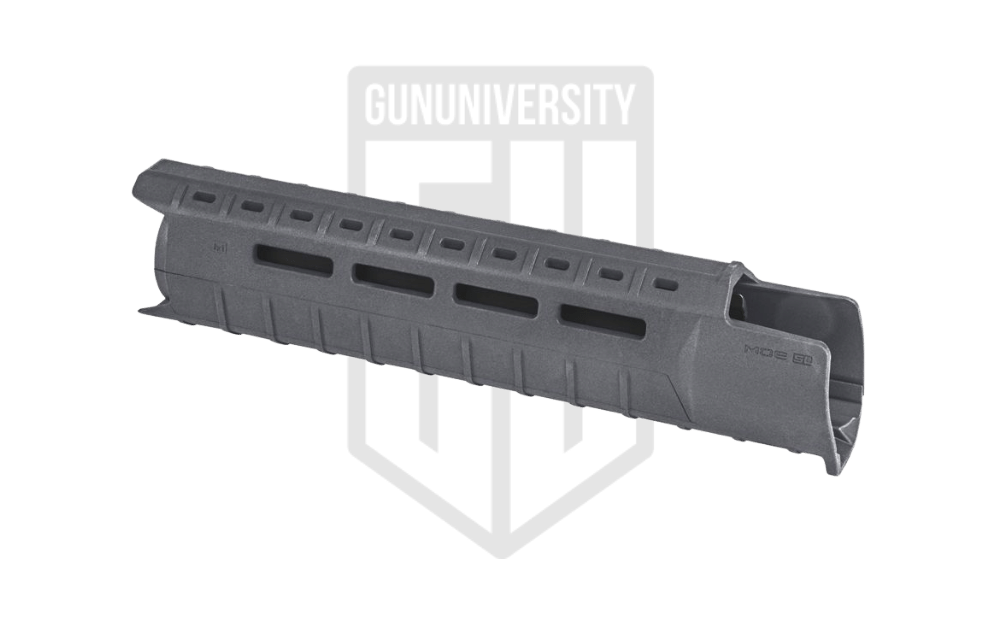
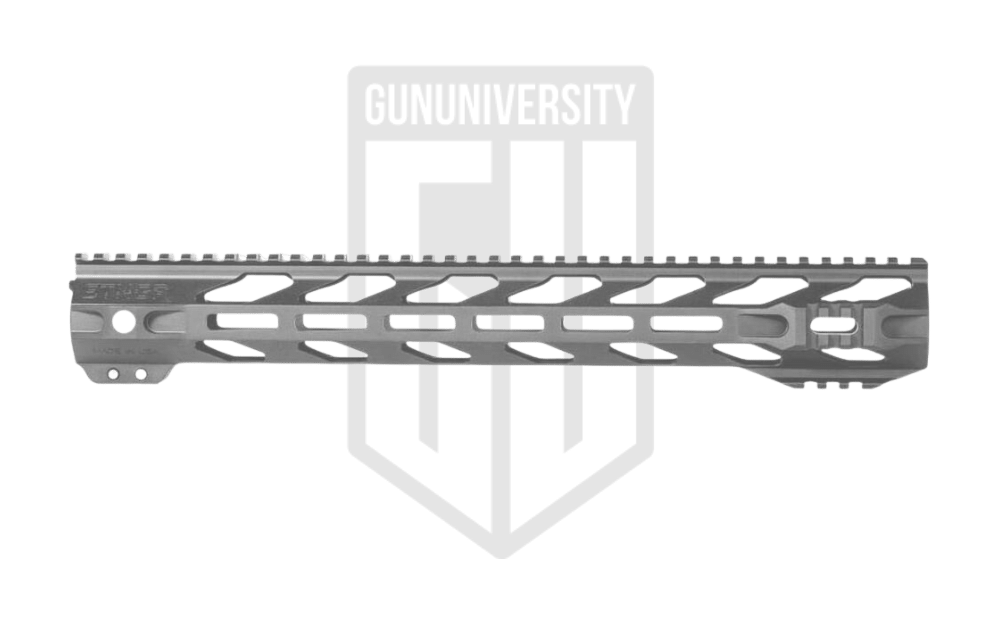
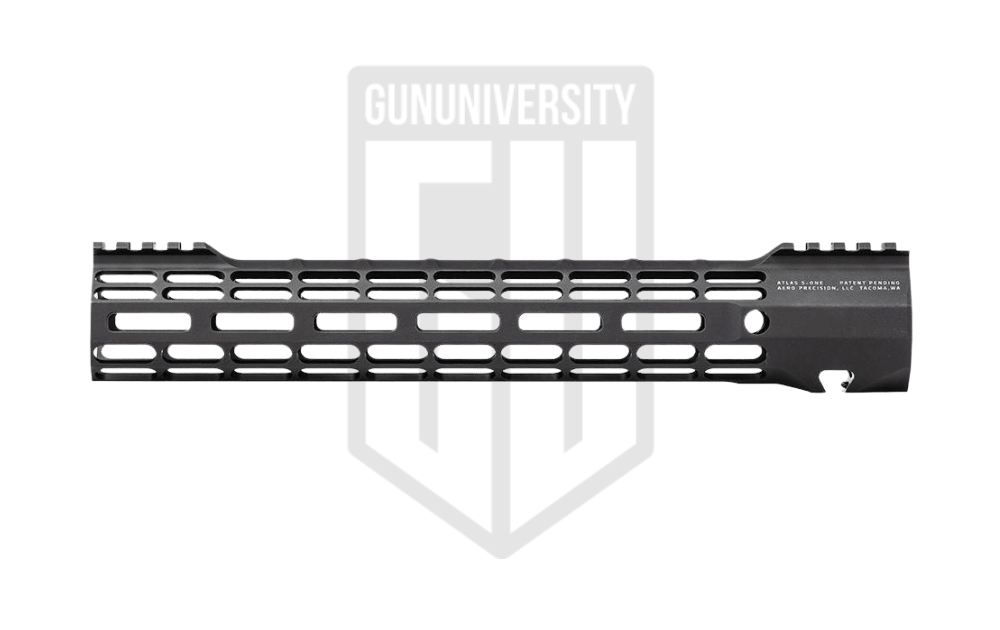
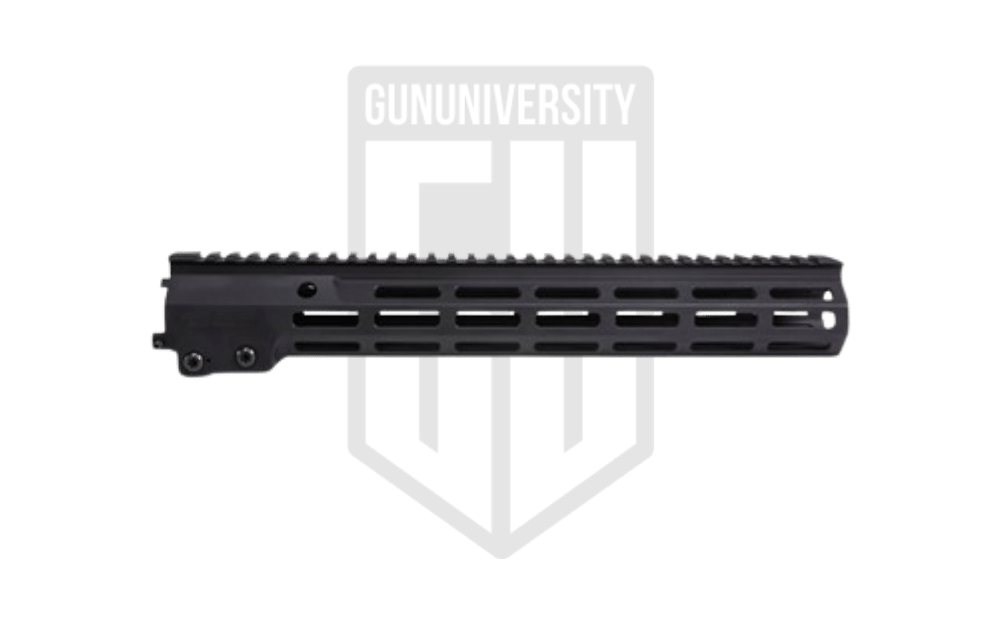

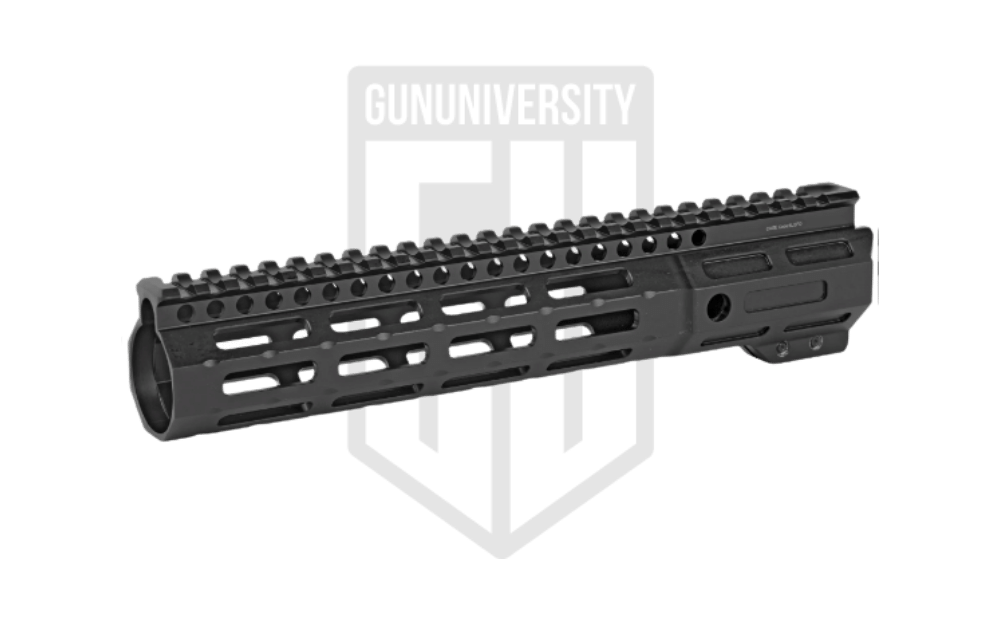
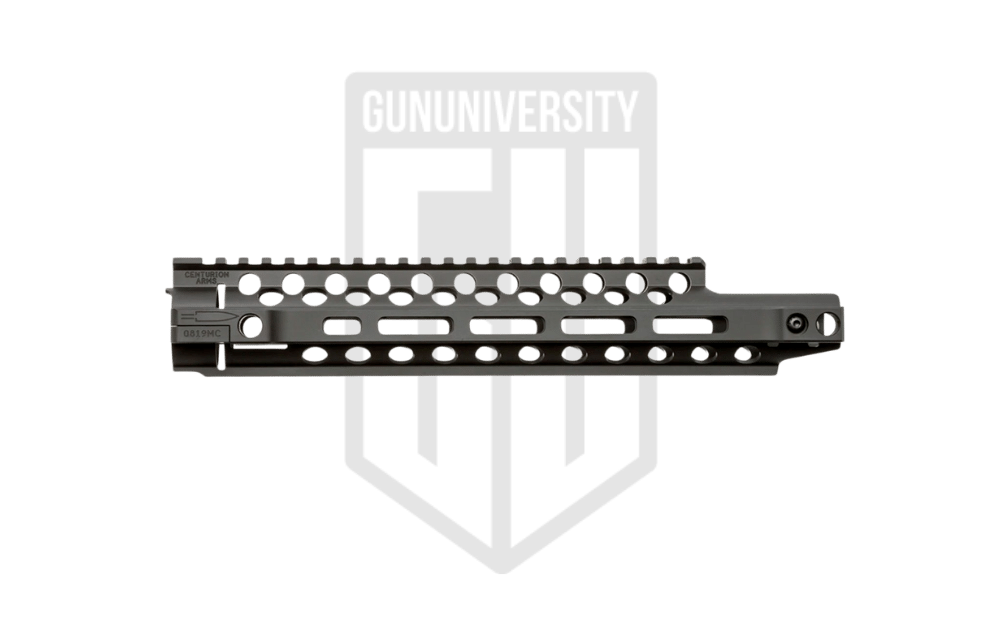
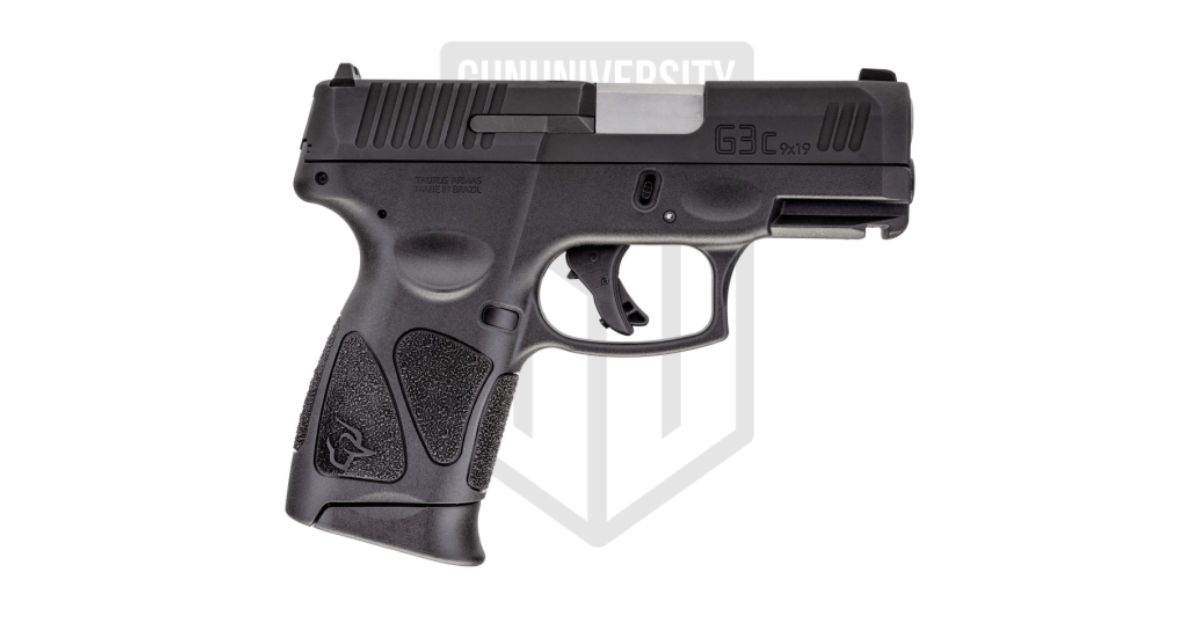
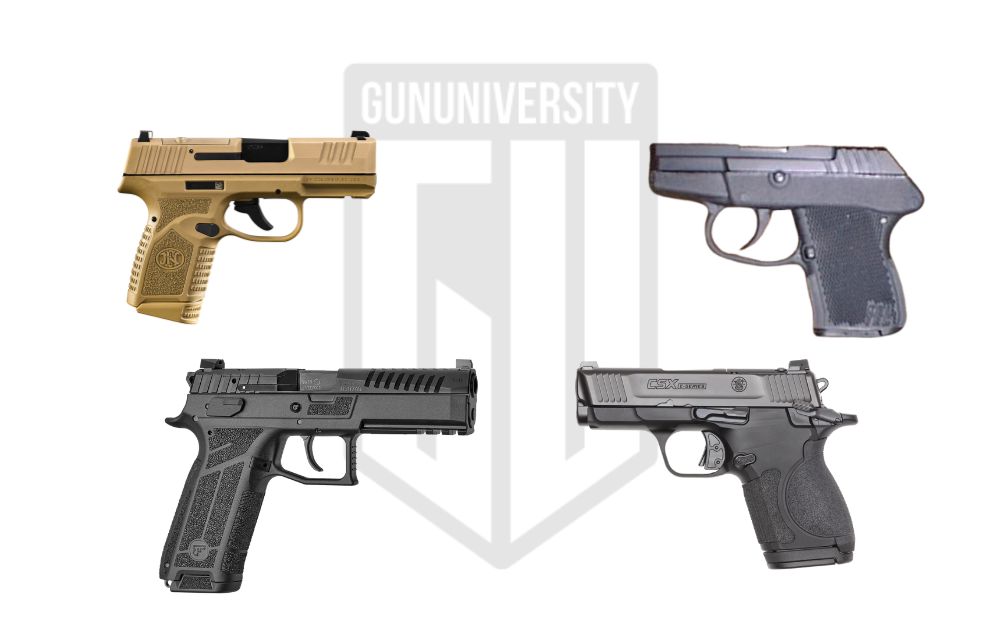
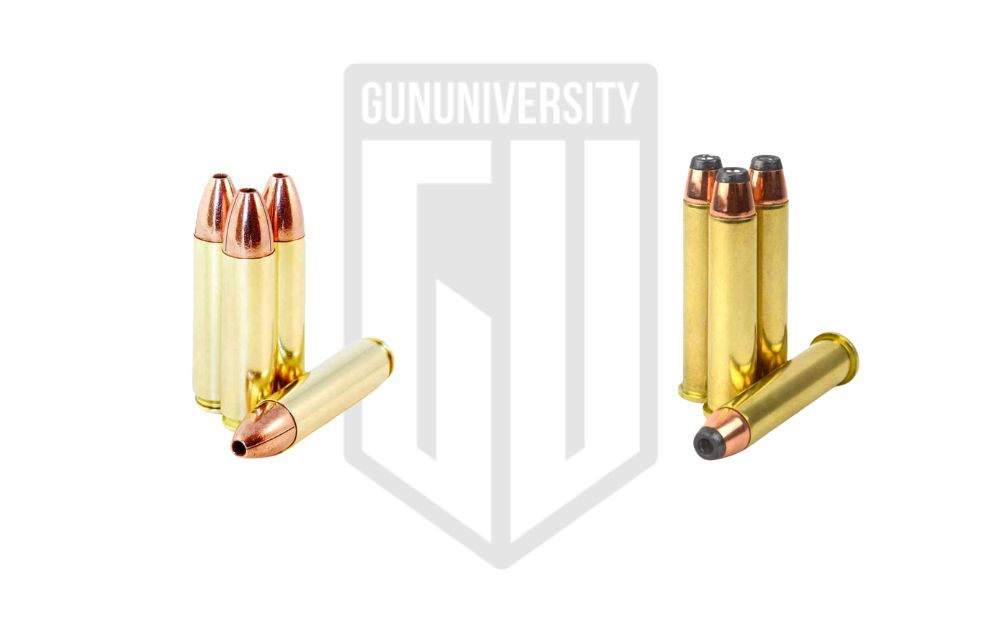
![Best First Handgun of 2025: [Beginners Guide]](https://gununiversity.com/wp-content/uploads/2024/07/Streamlight-TLR8.jpg)